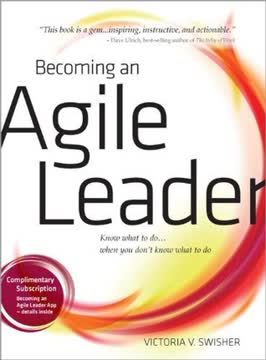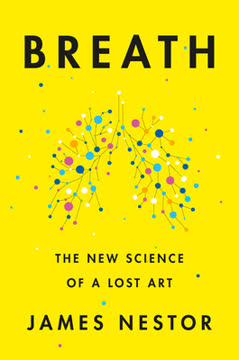Key Takeaways
1. Learning Agility: The Essential Skill for an Uncertain Future
Knowing or figuring out what to do in new, challenging situations when you don’t, at first, know what to do can help equip you for the change and complexity that is likely to come your way in your career and in life.
Embrace the unknown. In today's rapidly evolving world, job roles are becoming increasingly complex, and the supply of skilled talent is shrinking. This creates a significant "skill gap," where individuals often step into roles without possessing all the necessary knowledge. The traditional approach of relying on past successes can lead to career derailment, as tried-and-true solutions may fail in novel contexts.
Learn from experience. The solution to this growing complexity is Learning Agility—the willingness and ability to learn from experience and apply that learning to new, first-time conditions. It's not just about accumulating knowledge, but about extracting meaning and principles from every experience. This allows individuals to build a "treasure trove of options" to draw upon when faced with unfamiliar challenges.
An insurance policy. Learning Agility acts as an "insurance policy for an uncertain future." It enables leaders to adapt quickly, make fresh connections, and navigate ambiguity. By continuously learning and applying lessons, agile leaders are better prepared to tackle unforeseen problems and opportunities, ensuring success where others might falter.
2. Beyond IQ: Distinguishing Agile Learning from Traditional Intelligence
Learning new job and technical knowledge is different from learning new personal behaviors or ways of viewing events and problems.
More than book smarts. Learning Agility is distinct from traditional learning, which often focuses on intelligence (IQ), academic achievements, and functional/technical skills. While traditional learning is important for acquiring specific knowledge, agile learning is about adapting behaviors and perspectives in novel situations. It's about "street smarts" and learning from life experience, rather than just accumulating data.
Agile vs. Traditional:
- Traditional Learning: Intelligence (IQ), grades, standardized test scores, functional/technical skills, verbal skills, data crunching, straightforward problem-solving.
- Agile Learning: Quick thinkers, initiative-takers, curious, make fresh connections, acquire and use rules/principles, broad thinkers, self-aware of strengths/weaknesses.
Risk of over-reliance. Over-emphasizing traditional learning can be risky, as seen in the example of a company that hired solely based on academic criteria and faced high attrition. By incorporating agile learning characteristics, such as curiosity and variety of extracurricular activities, they significantly improved their success rate. Both types of learning are crucial, but Learning Agility provides the flexibility needed for transitions from the known to the unknown.
3. Self-Awareness: The Bedrock of Personal and Professional Growth
The best predictor of a high performance appraisal was seeing yourself as others see you; the best predictor of a low appraisal was overrating your skills.
Know thyself, for a purpose. Self-Awareness is the ability to deeply understand one's own strengths and weaknesses, free of blind spots, and to use this insight for effective performance. It's not just introspection, but a purposeful reflection aimed at achieving goals, as exemplified by Maya Angelou's continuous self-examination and openness to feedback.
Avoid blind spots. The greatest risk of lacking self-awareness is accumulating "blind spots"—perceived strengths that others view as weaknesses. These unaddressed weaknesses can derail careers, as individuals confidently enter situations where they should be cautious. Self-aware individuals, conversely, welcome criticism and learn from missteps, continuously bridging the gap between their current state and their aspirations.
Sharpening Self-Awareness:
- Seek Feedback: Solicit formal and informal feedback from diverse groups (bosses, customers, peers, direct reports).
- Accept Feedback: Listen without defensiveness, argument, or qualification.
- Self-Inventory: Identify clear strengths, overused strengths, known weaknesses, untested areas, and especially blind spots.
- Introspection: Reflect on why you are perceived a certain way, and what experiences shaped your behaviors.
- Learning Journal: Log issues, reactions, and insights to distill "rules of thumb."
- Disclose More: Admit imperfections and share thoughts to build trust.
- Natural Mentors: Find trusted individuals outside your direct chain of command for candid feedback.
4. Mental Agility: Unlocking Creative Solutions to Complex Problems
If you can’t explain it simply, you don’t understand it well enough.
Curiosity fuels insight. Mental Agility is the capacity to embrace complexity, examine problems uniquely, and make fresh connections, driven by inquisitiveness. Albert Einstein, though a genius, demonstrated this through his persistent questioning and ability to visualize complex problems, making them accessible to others. It's about how one thinks, not just what one knows.
Navigating complexity. In a world of rapid technological advancements and global shifts, problems are increasingly intricate and opportunities elusive. Mentally agile individuals are highly valued for their ability to:
- Sift through complexity to grasp the essence of issues.
- Define problems crisply and articulate them simply.
- Maintain a healthy skepticism of past solutions, staying open to new possibilities.
Sharpening Mental Agility:
- Fight Sameness: Expose yourself to unfamiliar topics, cultures, and routines.
- Embrace the Unknown: Visualize complex problems, ask probing questions ("Why does that work?"), and make incremental decisions to learn from instant feedback.
- Think It Through: Check for common errors in thinking (stating opinions as facts, overgeneralizing), dig for root causes by asking "why" repeatedly, and look for parallels in successes and failures to derive repeatable principles.
5. People Agility: Navigating Relationships to Achieve Collective Goals
If you talk to a man in a language he understands, that goes to his head. If you talk to him in his language, that goes to his heart.
Student of people. People Agility is the ability to be open-minded, enjoy diverse interactions, understand others' strengths and limitations, and leverage these insights to achieve organizational goals. Nelson Mandela exemplified this by learning Afrikaans and understanding his jailors' perspectives, building relationships that ultimately led to historic change. It's about meeting people where they are, not expecting them to adjust to you.
Getting things done through others. In today's interconnected world, significant accomplishments rarely happen in isolation. People Agility is crucial for:
- Reading situations quickly and defusing high-tension scenarios.
- Embracing and leveraging diverse viewpoints.
- Navigating political landscapes effectively.
- Transforming conflict into collaboration by understanding others' positions and finding common ground.
Sharpening People Agility:
- Value People: Manage the first three minutes of interaction to set a positive tone, be fully present (avoid multitasking), and share information generously to build rapport and trust.
- Know People: Approach situations from others' perspectives ("outside-in"), seek out people unlike yourself to broaden understanding, and practice articulating others' viewpoints accurately.
- Adapt to People: Tailor your communication approach to fit others' needs (e.g., speaking to engineers vs. marketing), monitor reactions and adjust your style, and turn conflicts into collaborations by demonstrating equity and seeking mutual understanding.
6. Change Agility: Leading Transformation and Embracing the Unknown
If we are not achieving something, it is because we have not put our minds to it. We create what we want.
Question the status quo. Change Agility is the inclination to embrace change, continuously explore new options, and lead organizational transformation efforts. Muhammad Yunus, founder of Grameen Bank, embodies this by challenging conventional banking norms and relentlessly experimenting to create a world-changing model. It's about having a passion for ideas and viewing problems as opportunities for improvement.
Vision to reality. Change-agile individuals are adept at envisioning the future, not through fantasy, but through careful study of trends and historical lessons. They understand that most significant changes result from a long process of trial and error, where failure is seen as a learning opportunity. They are willing to absorb the discomfort that comes with leading change, even when it makes them unpopular.
Sharpening Change Agility:
- Be an Idea Magnet: Become a student of your business and industry, make fresh connections by cross-pollinating experiences, and hunt for parallels outside your usual frame of reference (e.g., how other industries solve similar problems).
- Turn Vision into Reality: Balance perfectionism with action, be an incrementalist by trying quick, inexpensive experiments, and "work the maze" by navigating organizational complexities and gaining support from various stakeholders.
- Take the Heat: Prepare in advance for objections, patiently listen to concerns, and manage the message by conveying the "what" and "why" while offering choices and finding common interests to reduce resistance.
7. Results Agility: Delivering Success Against All Odds
You cannot keep determined people from success. If you place stumbling blocks in their way, they will use them for stepping-stones and climb to new heights.
Energized by challenge. Results Agility is the drive to deliver outcomes in new or tough situations through resourcefulness and by inspiring others. Mary Kay Ash, who built a multi-billion-dollar company against societal norms, exemplifies this by relishing challenges, demonstrating tenacity, and empowering her sales force. It's about achieving significant results, not just everyday tasks.
Resourcefulness and resilience. Results-agile individuals are known for "pulling rabbits out of hats." They excel at:
- Maximizing limited resources.
- Adapting quickly to obstacles and changing circumstances.
- Maintaining resilience in the face of setbacks.
- Persisting with a variety of approaches when initial attempts fail.
Sharpening Results Agility:
- Welcome Challenges: Take calculated risks, learn on the fly by trying new solutions, and persevere by trying different ways when the first isn't effective.
- Be Inspiring: Build a common mindset around a shared purpose, enhance your presence to project confidence and passion, and understand common motivators (challenge, growth, autonomy) to inspire others.
- Execute, Execute, Execute: Plan for both expected and unexpected scenarios, practice "quid pro quo" to secure resources by finding common ground, and unleash the power of delegation by setting clear goals and allowing others autonomy in "how" to achieve them.
8. Cultivating Agility: A Lifelong Journey of Experience and Reflection
The ability and willingness to learn from experience, and subsequently apply that learning to perform successfully under new or first-time conditions.
Continuous development. Learning Agility is not an innate trait but a set of behaviors and attitudes that can be developed and sharpened over time. Whether aspiring to broad leadership roles or deep expertise, continuous learning from diverse experiences is highly beneficial. The key is to actively seek out opportunities that stretch your capabilities and provide new insights.
Leverage every experience. To maximize your growth, reflect on your past and current roles. Have they offered diverse experiences for harvesting meaning, or have they deepened your existing expertise? Forecast your career path and align your development efforts accordingly. If broad leadership is your goal, focus on building all five agilities; if deep expertise, continue honing your mastery while still valuing self-awareness.
The power of reflection. Regardless of your path, Self-Awareness is paramount. Regularly gauge how others perceive you, both formally (assessments) and informally (asking for feedback). Make reflection a habit—jot down "ahas" from interactions, decisions, wins, and losses. By consistently reflecting and applying course corrections, you will unlock new roads for your journey and, above all, keep learning.
Last updated:
Review Summary
Becoming an Agile Leader receives mixed reviews, with an average rating of 3.69 out of 5. Readers appreciate its practical tips for improving leadership skills and building agility. The book covers five agility factors: self-awareness, mental, people, change, and results. Some find it a quick, helpful read with valuable insights, while others note its repetitive nature. Many readers consider it a useful resource for current and aspiring leaders, offering a framework for adapting to changing environments. Several reviewers mention they will revisit the book for its actionable advice.
Similar Books
Download PDF
Download EPUB
.epub digital book format is ideal for reading ebooks on phones, tablets, and e-readers.










